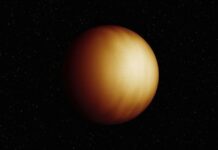The James Webb Space Telescope (JWST) is providing unprecedented glimpses into the early universe, challenging long-held assumptions about how supermassive black holes formed. These colossal objects, found at the centers of most galaxies, have puzzled astronomers for decades, as it has been difficult to explain how they grew so rapidly in the relatively short span of time following the Big Bang. Recent observations, particularly of an object dubbed QSO1, are further complicating the picture and suggesting the possibility that some black hole origins may be far stranger than previously imagined.
The Mystery of Supermassive Black Holes
Ever since astronomers first detected supermassive black holes residing at the cores of galaxies, the question of their rapid growth has been a persistent enigma. The prevailing theory suggests these black holes formed from the collapse of massive stars, gradually increasing in size by consuming surrounding gas, dust, and even other black holes. However, calculations show this process would have been too slow to account for the behemoths observed at such an early stage in the universe.
QSO1: A Lone Black Hole in a Missing Galaxy
JWST’s observations have focused on an unusual system called QSO1, located within the Abell 2744 galaxy cluster (also known as Pandora’s Cluster). The cluster’s mass acts as a “gravitational lens,” bending and amplifying light from distant objects, allowing astronomers to study them in detail. Light from QSO1, emitted roughly 700 million years after the Big Bang (the universe is currently around 14 billion years old), revealed a startling discovery: a black hole with a mass equivalent to 50 million suns.
What makes QSO1 even more remarkable is its apparent lack of a substantial galactic structure around it. Marta Volonteri, a leading expert on black hole formation at the Paris Institute of Astrophysics, described it as an “odd system” where the black hole appears to be “dominating” and the galaxy seems to be missing. In contrast to Sagittarius A*, the black hole at the center of our own Milky Way, which has a mass only a tiny fraction of the galaxy’s total mass, the black hole in QSO1 accounts for roughly twice the mass of all surrounding gas and stars.
The Rise of the “Little Red Dots”
JWST’s data has unveiled another intriguing phenomenon: numerous compact, reddish galaxies, dubbed “little red dots,” observed in the early universe (500 million to 1.5 billion years after the Big Bang). These ancient systems potentially indicate that galaxies – or both galaxies and black holes – evolved earlier and with greater densities or masses than previously thought.
Alternative Black Hole Formation Scenarios
While the traditional model proposes black holes forming from the collapse of massive stars, other theories have emerged to explain the rapid growth of these cosmic giants. One alternative suggests that some early black holes formed from the direct collapse of massive gas clouds, bypassing the stellar evolution stage. Evidence for this scenario was found with the discovery of UHZ-1, which exhibits characteristics consistent with direct collapse.
However, the peculiar nature of QSO1 points towards a different path. Marta Volonteri suggests possibilities such as a “primordial black hole” – formed in the immediate aftermath of the Big Bang – or even a black hole formed from self-interacting dark matter. The critical point is that the black hole in QSO1 appears to have originated before the surrounding ordinary matter (gas and stars).
Primordial Black Holes: A Relic of the Early Universe
The concept of primordial black holes, first proposed in 1967, offers a compelling explanation. Theorists Yakov B. Zeldovich and Igor D. Novikov posited that regions of the early universe could have contained such dense concentrations of matter that they collapsed directly into black holes. Stephen Hawking further developed this idea in 1971, and it has since become a subject of considerable research. These primordial black holes would have enjoyed a significant head start in growth and size, eventually residing at the centers of the galaxies that formed around them.
“That the black hole in QSO1 grew so much without any star formation taking place points to a case in which it developed significantly faster than the galaxy,” Volonteri stated.
Rewriting the Cosmic Narrative
The discovery of QSO1 raises a fundamental question: did galaxies form around their central black holes, or did black holes precede their host galaxies? While the analysis is ongoing and complex, QSO1’s existence highlights that what were once considered “exotic models” may be increasingly common in the early universe. JWST’s observations are poised to continue challenging existing theories and reshaping our understanding of the cosmos and the origins of the structures within it.
























